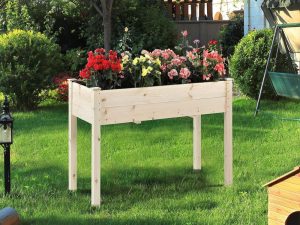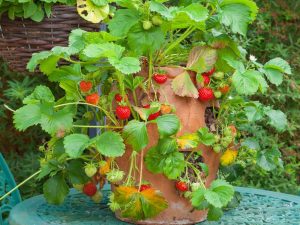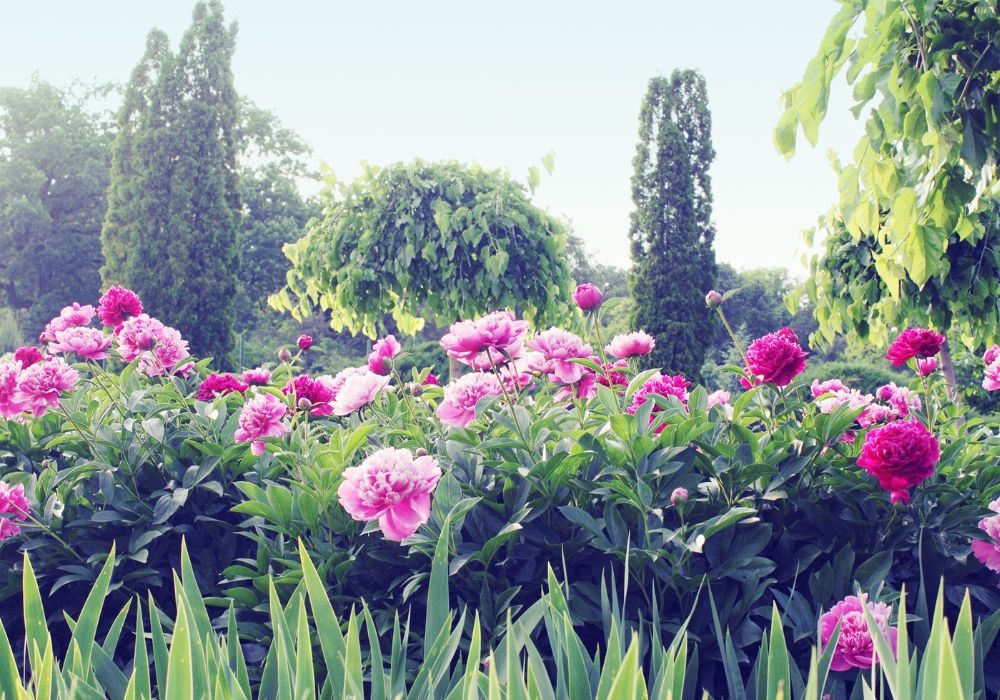
For decades gardeners have fallen in love with peony because of their rich blossoms and sweet scent. These perennial favorites represent success and good fortune in addition to providing a riot of color for your garden from late spring through early summer. This book will provide you the necessary information to properly grow and care for these gorgeous flowers, regardless of your level of experience with gardening or just peony cultivation.
Peonies Basics
Contents
Among the most often used perennials in the garden, peony are celebrated for their large, opulent blossoms and long lifespan. From Asia, Europe, and Western North America, these plants have a spectrum of forms from the common herbaceous varieties that die back in winter to the sturdier tree types which keep their woody stems year-long. Given their pallet of colors,pink, red, white, and yellow, the flexible flowers fit any kind of garden design.
Growing these flowers offers a rewarding experience since their lifetime is long and they usually bloom in the same spot for decades with little attention. Fall planting will help their roots to establish before the growing season. Appropriate placement and maintenance will help them to create incredible springtime blossoms that will color and scent your garden.
Choosing the Right Peony Variety
Selecting the right variety of this beloved perennial is crucial for ensuring your garden thrives with vibrant blooms and lush foliage. Understanding the different types of peonies and their specific needs will help you create a garden that not only survives but flourishes season after season. Here’s a detailed look at the main categories and considerations to guide you in making the best choice for your garden space.
Herbaceous Peonies
Herbaceous varieties are the most common and are cherished for their ability to return year after year with minimal maintenance. These plants die back to the ground each winter and reemerge in the spring, showcasing their large, fragrant blooms.
They typically grow about 2 to 3 feet tall and are ideal for borders or as focal points in garden designs. Popular varieties include the ‘Sarah Bernhardt’ with its lush, pink double blooms and the striking ‘Karl Rosenfield,’ known for its deep red petals.
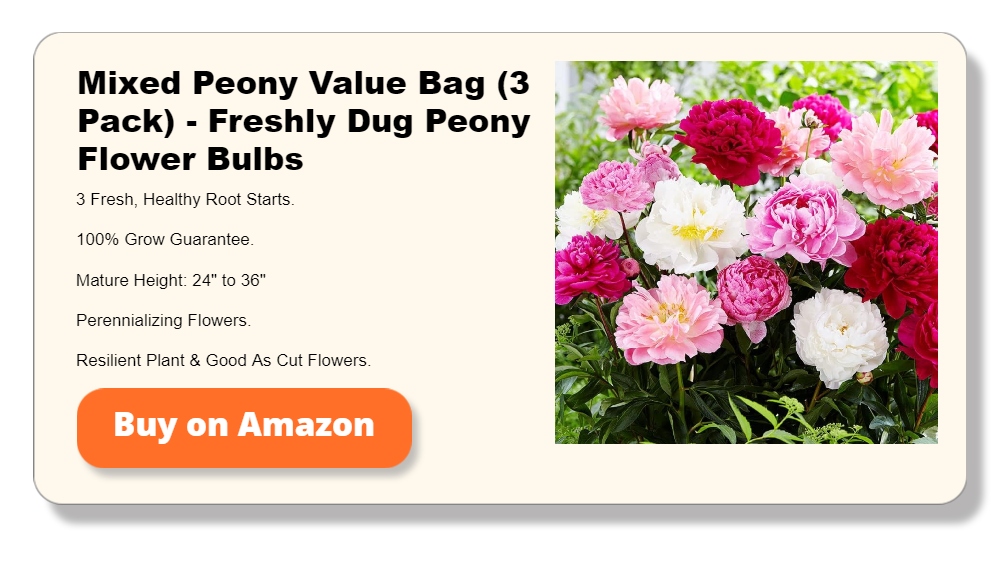
Tree Peonies
Unlike their herbaceous counterparts, tree peonies have woody stems that do not die back in winter and can grow much larger, up to 4-5 feet tall. They bloom earlier in the season and their flowers can be remarkably large with a wide array of colors and forms.
These varieties are perfect for creating a statement in the landscape but require a bit more care in terms of pruning and protection from harsh winter weather. ‘Shimane Cho Juraku’ and ‘Kinshi’ are exquisite examples, offering golden-yellow and rich golden-orange blooms, respectively.
Itoh Peonies
Itoh peonies are a hybrid between herbaceous and tree peonies, combining the best traits of both. They feature the large, colorful flowers and strong stems of tree peonies with the herbaceous peony’s ability to die back to the ground in winter.
These plants are resilient, capable of producing up to 50 blooms in a single season, and their foliage remains attractive throughout the growing season. Varieties like ‘Bartzella’ with its vibrant yellow flowers and ‘Cora Louise’ featuring white blooms with a lavender center are popular choices among gardeners.
Factors to Consider When Choosing a Peony Variety
Climate Adaptability
Understanding your local climate is essential when choosing a peony. While most peonies prefer cooler climates, some varieties have been bred to tolerate warmer zones. Before selecting a variety, ensure it is suitable for your USDA hardiness zone to promote healthy growth and blooming.
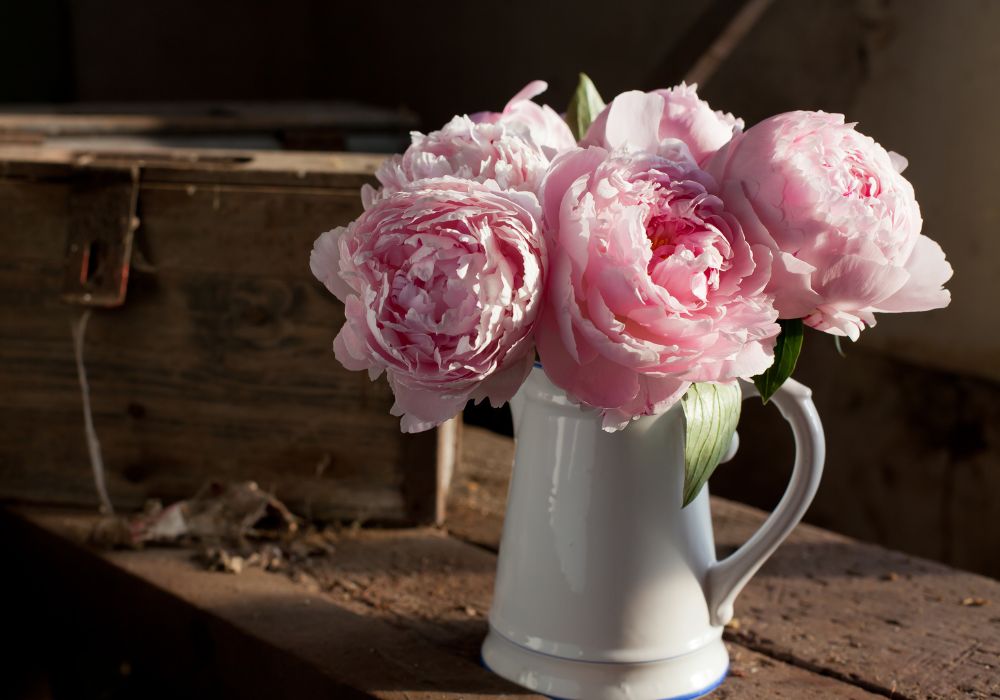
Bloom Time
Peonies have a relatively brief bloom period, and their flowering time can vary by type. By selecting varieties that bloom at different times, you can extend the blooming period in your garden, ensuring a continuous display of colors and fragrances.
Space Requirements
Consider the mature size of the peony variety you are interested in, as they can vary significantly in height and spread. Ensure you have enough space to accommodate the full growth of the plant, keeping in mind that some peonies can live and thrive for many years, becoming quite large.
Choosing the right peony variety involves careful consideration of the plant’s characteristics and how they align with your garden’s conditions and your aesthetic preferences. Whether you opt for the traditional charm of herbaceous peonies, the striking presence of tree peonies, or the resilience and beauty of Itoh hybrids, understanding these aspects will help you cultivate a garden that brings joy and color every spring.
Planting Peonies
Years of amazing blooms are laid by planting these striking flowers in the correct time and manner. Here is a thorough guide on how to plant them to guarantee their brilliant display will improve your garden.
Best Time to Plant
Planting best occurs in the fall, ideally six weeks before the ground freezes. This guarantees the plants’ well-settlement to explode into growth come spring and lets them establish their roots free from the stress of summer heat. Planting during this season also benefits from the cooler temperatures and more rainfall, which enable the roots to create robust networks.
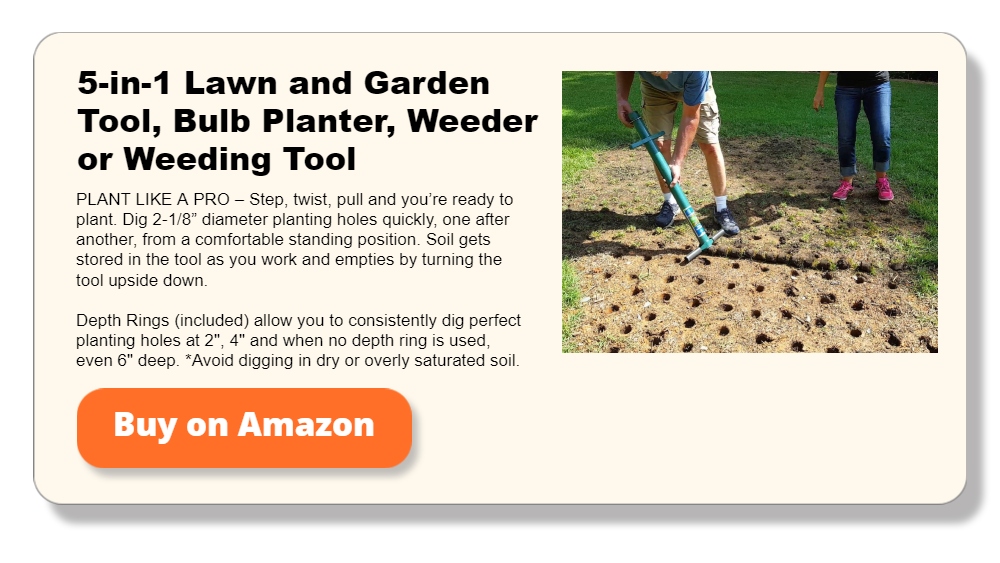
Choosing the Right Location
- Sunlight Requirements: These flowers flourish in a location that receives full to partial sunlight. At least six hours of direct sunlight is ideal. Areas with morning sunlight and afternoon shade are perfect, especially in warmer climates, as this helps protect the blooms from the midday heat which can cause the colors to fade.
- Soil Conditions: Well-drained soil is crucial for the health of these plants. They do not tolerate wet feet, and poorly draining soil can lead to root rot. Ideally, the soil should be rich in organic matter with a neutral to slightly acidic pH. If your garden soil is heavy or clayey, consider amending it with compost or planting in raised beds to improve drainage.
Planting Procedure
- Preparing the Site: Start by loosening the soil to a depth of 12-18 inches to facilitate easy root growth. Mix in a generous amount of compost to enrich the soil. If you are planting multiple, ensure there is adequate space between them, about 2-3 feet apart to accommodate their growth and enhance air circulation.
- Planting Depth and Orientation: The depth at which you plant is critical for flower production. The eyes (buds from which the stems grow) should be planted about 1-2 inches below the surface in warmer climates and a bit deeper in colder regions. This positioning ensures the buds are insulated during winter but not so deep that they inhibit spring growth. Make sure the eyes face upwards and the roots are spread outwards and downwards.
- Watering After Planting: After planting, water thoroughly to settle the soil around the roots and help eliminate air pockets. Continue to provide water if the fall is unusually dry, but decrease frequency as the temperature drops to encourage dormancy.
Aftercare
- Mulching: Applying a layer of mulch after planting helps retain moisture, keep the soil temperature stable, and prevent weeds. Use organic mulch like straw or shredded bark, which will also add nutrients to the soil as it decomposes. Avoid piling mulch directly against the stems to prevent rot.
Planting them with care and consideration for their specific needs ensures they will be a cornerstone of your garden for many years. By following these detailed steps, you can look forward to the lush, vibrant blooms that make these flowers a gardener’s favorite.

Caring for Peonies
.Caring for these garden favorites involves more than just admiring their spectacular blooms; it requires a few simple yet essential steps to maintain their health and ensure they continue to thrive year after year. By following these guidelines, you can enjoy the lush, vibrant displays that make these flowers a highlight of any garden.
Watering
Proper hydration is key to keeping your garden vibrant. Peonies prefer a consistent moisture level, so it’s important to water them regularly, especially during dry spells. However, they do not tolerate standing water, so ensure good drainage to prevent root rot. A deep watering once a week is usually sufficient, but this may need to be adjusted based on temperature and rainfall. During the growing season, it’s crucial to avoid wetting the foliage as this can lead to fungal diseases.
Fertilizing
Appropriate fertilization is absolutely vital if you want your garden to flourish. Apply a low-nitrogen fertilizer early in spring as the plants start to show fresh development. This first feed builds a strong basis for the blooming period by strengthening the roots and shoots.
Changing to a balanced 10-10-10 fertilizer can increase the general vitality of the plant once the flowers have faded, so supporting both root and leaf development. Fertilizer use should be under close observation; too much fertilizer can promote rich foliage development at the expense of blooms, so reducing the colorfulness of the garden. To prevent over-fertilization and guarantee best plant health, then, following the advised amounts on the fertilizer package is absolutely crucial.
Pruning and Deadheading
Though these plants naturally die back at the end of the season, some pruning techniques help. Deadheading, that is, removing spent blooms, not only improves the look of your garden but also focuses the plant’s energies from seed generation toward strengthening its roots and leaves.
This habit can greatly improve the flowering capacity and expansion possibilities for the next year. Cut the stems down to barely above the soil line in the fall, when the leaves have yellowed and died. This encourages better, more forceful spring growth and helps stop disease from overwintering on old plant material. Maintaining vivid and healthy plants depends mostly on regular pruning and cleaning-up.

Disease and Pest Management
Though generally hardy, these plants can be vulnerable to a number of pests and diseases, so compromising their beauty and growth potential. Common especially in humid environments are fungal diseases including powdery mildew and botrytis blight.
Properly spacing plants will help to maintain good air circulation and avoid overhead watering causing problems. Should fungal diseases arise, eliminating any impacted foliage is essential to stop more spread. Another successful approach is applying a fungicide according manufacturer directions.
Pests-wise, peony ants are frequently found on the buds drawn by the nectar. Usually speaking, these ants are benign. Still, thrips cause actual damage to the blossoms, thus they represent a threat.
Managing thrips could call for the use of organic solutions like neem oil, which is environmentally friendly and safe for the plant and surroundings or insecticides. Your plants should be the focal point of your garden every year if they remain healthy and vibrant by means of regular monitoring and early intervention.
Winter Care
In colder climates, preparing them for winter is crucial. After the first frost, when the leaves have died back, cut the stems down to just above ground level and dispose of the foliage to prevent disease. Applying a layer of mulch after the ground has frozen can help to insulate the roots, preventing freeze-thaw cycles that can heave the roots out of the ground. Remove the mulch in early spring before new growth starts to prevent rot.
Caring for these plants might require some attention to detail, but the reward of their stunning blooms and robust growth makes the effort well worthwhile. With proper watering, fertilization, and preventive care against pests and diseases, your garden will be graced with their beauty for many springs to come.
Common Challenges and Solutions
Navigating the challenges of growing peonies ensures that your garden remains a vibrant and flourishing showcase of these exquisite blooms. While generally robust, peonies can encounter several issues that may hinder their health and aesthetic value. Understanding these common challenges and implementing effective solutions can greatly enhance your gardening success.
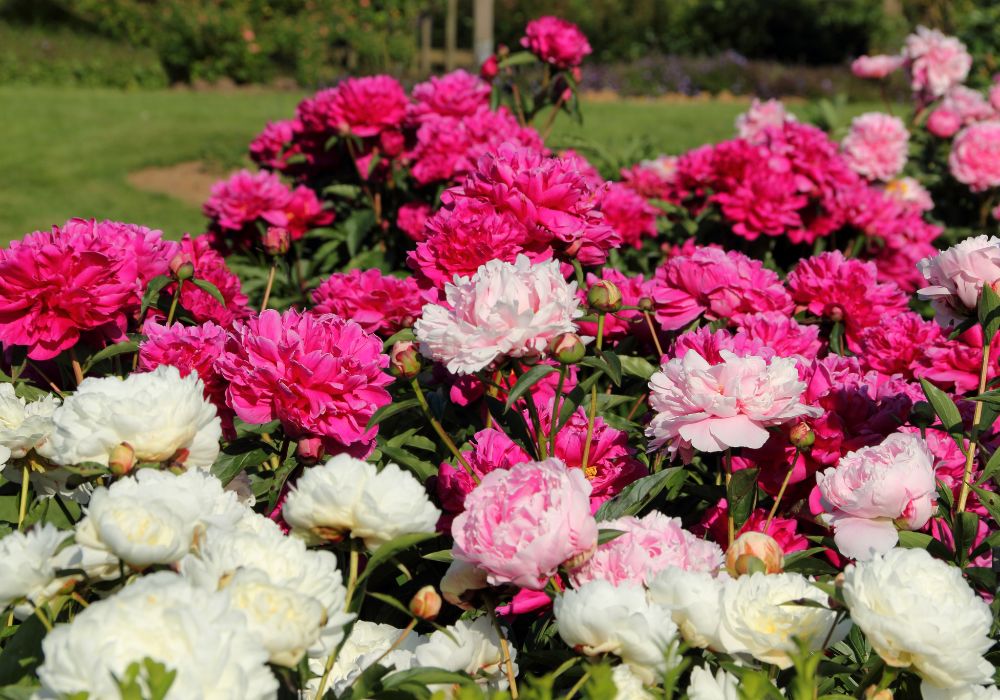
Pests and Diseases
Botrytis Blight
One of the most common fungal diseases affecting peonies is botrytis blight. This fungus typically manifests as gray mold on buds, leaves, and stems, especially in cool, damp weather. To manage this issue, improve air circulation by spacing plants properly and trimming excess foliage. Remove and destroy any infected plant parts immediately to prevent the spread of the disease. As a preventive measure, apply a fungicide in the early spring or as soon as the first signs of the disease appear, following the manufacturer’s guidelines.
Peony Wilt
Peony wilt, caused by a fungus, leads to the wilting and often blackening of stems and leaves. This can be particularly disheartening as it may appear suddenly and can ruin the aesthetic appeal of the plants. The key to managing peony wilt is to ensure good planting practices with well-drained soil and adequate spacing. Affected parts should be cut off and destroyed, and the soil around the plant should be treated with a fungicidal soil drench to prevent recurrence.
Pest Control
Ants
While ants are generally harmless and are often found on peonies due to the sweet nectar they produce, their presence can be alarming to some gardeners. It’s important to note that ants can actually benefit the plants by keeping away more harmful pests. However, if their population becomes overwhelming, gently rinsing the plants with a water hose can reduce their numbers without harming the blooms.
Thrips
Thrips are tiny insects that can cause significant damage to flowers, leading to discolored and distorted blooms. Managing thrips involves regular monitoring and, if necessary, the application of insecticidal soap or neem oil, which are effective and less harmful to the environment compared to synthetic pesticides. Early detection and treatment are crucial to prevent serious damage to the plants.
Environmental Challenges
Harsh Winters
In regions with severe winter conditions, peonies can suffer from root damage due to freezing temperatures. To protect these plants, apply a thick layer of mulch after the ground has frozen. This helps insulate the roots from extreme cold. Remove the mulch in early spring to avoid any potential rot from excess moisture as the weather warms.
Overcrowding
Peonies maturity can cause crowding that reduces their vigor and bloom output. Think about early fall division of the plants every five to ten years. Along with revitalizing the plants, this lets you share their beauty with other areas of your garden or with other gardeners.
Nutritional Deficiencies
Lack of Blooms
One of the usual worries of gardeners is when peonies flowering fails. Often this can be related to a lack of nutrients, especially phosphorous, which is necessary for bloom development. Using bone meal or a fertilizer high in phosphates will encourage flowering. Furthermore make sure the plants are not buried too deeply since this will also prevent their capacity to bloom.
Properly managing these difficulties not only improves the appearance of your garden but also guarantees that these cherished blossoms realize their best potential. Regular maintenance plus careful observation for symptoms of distress will help you to enjoy the rich, vivid presence of peony in your garden year after year. With the correct techniques in place, these obstacles become only stepping stones toward successful gardening.
Conclusion
Growing peonies will reward you with amazing blooms every spring and turn your garden into a display of vivid colors and fragrances. These perennial favorites will flourish and keep your outdoor area lovely for years to come with appropriate care and attention to their particular needs. Accept the delight of growing peonies and see how they accentuate your gardening projects.
We have more flower-growing tutorial for you. Check out our hibiscus flower growing guide next!



